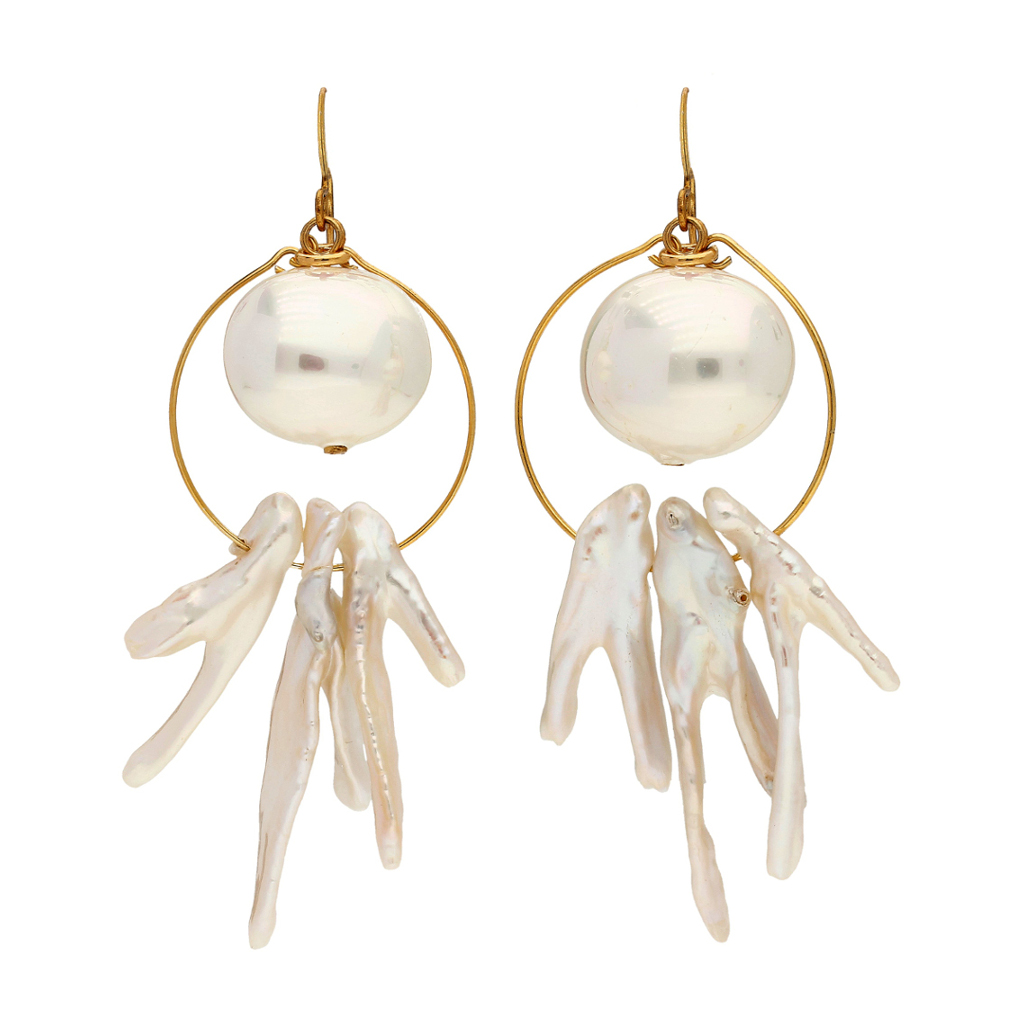Precisely, due to these magical myths about its birth, pearls have been attributed surprising, almost divine properties. And that is why, over time, many men have given way to a frantic search for pearls to obtain them and use them as talismans, which has resulted in the destruction of many natural banks where pearls were formed.
Already in the Middle Ages, in some Western countries, it was said that pearls are the tears of rebellious angels: hence the belief that in some cases they are the bearers of tears and therefore unhappiness. In fact, one of the most widespread popular beliefs in some Western countries, including Italy, says that giving pearls to the bride could bring tears in the future married life. It seems that this legend comes directly from the East, where pearl fishers often did not return from their outings to the sea, leaving brides and wives in tears.
The oldest and oldest jewels in the history of mankind are shells: they began to adorn our necks and wrists a hundred thousand years ago. Only very recently, around 5300 BC. C., in Mesopotamia, someone came up with the idea of using those white spheres hidden in some mollusks as an ornament. The passion for pearls was born at first in the bosom of Asian civilizations, because these miracles of mother-of-pearl were hidden in their seas: in the Persian Gulf, in the Red Sea and on the Indian coasts.
The caravans carried the mother-of-pearl to the West and began a journey that arrives
Our days. The first western people to fall in love with pearls was the Roman. According to Pliny, it all began when Pompey, in the 1st century BC. C., celebrated his victories in Asia Minor with a portrait made with pearls.
With their pen bathed in misogyny, several historians have left testimony of the ruinous addiction that nacre has awakened among women since then. The most fatal of all, Cleopatra, possessed the two largest in the world, one of them dissolved in vinegar and drank it, to the astonishment of Marco Antony. For centuries it was believed that this cocktail was a legend, but a team of scientists recently demonstrated that the solution is possible if the nacre is pretreated.
In the Middle Ages it became a very important part of Christian imagery, especially as a symbol of the purity of the Virgin. divine design. The orb and crown of the emperors of the Holy Roman Empire, dated between the 10th and 11th centuries, for example, contain more pearls than any other gemstone.
From the thirteenth century, with the rise of the cities, the passion ceased to be exclusive of aristocrats and ecclesiastical dignities and spread to the bourgeoisie. Pearls were a symbol of status and, in addition to jewelery, they began to shine as set in the clothing. Those who could not afford the originals resorted to the fake ones, made of enamel. Leonardo da Vinci himself wrote a formula to manufacture them.
Something curious is that brides wore pearls as a symbol of their purity, and some praised them for their healing properties: in Spain, for example, it was believed that drinking their powder strengthened the heart.
The discovery of America was also the discovery of new sea beds rich in them. The sixteenth century was the beginning of an age of gold, or rather mother-of-pearl. The age of gigantic pearls with their own name. Two of them, La Peregrina (owned centuries after actress Elizabeth Taylor) and La Grande, were part of the jewels of the Spanish Crown.
For Elizabeth I of England they were a political instrument, a symbol of her condition as Virgin Queen of her: she had a rope with 600 crimps, and in some dresses she wore them sewn at the waist, as an enhancement of her chastity. But the users of it would not only be great ladies of hers: one of the most spectacular is the pearl that adorned the ear of Charles I of England when he was executed.
For centuries they were the only jewel that he allowed widows and those attending funerals to flaunt, as the idea of Greek mythology that they were the tears of the gods was recovered. Interestingly, mother-of-pearl, between the 16th and 17th centuries, was also believed appropriate for an event totally opposed to death: it was worn by pregnant women, as it was considered a fertility charm.
At the beginning of the 20th century, the technique of producing cultured pearls was invented in Japan. Mother-of-pearl was democratized and, therefore, it was no longer seen as something exclusive. Coco Chanel, who made infinity-twist necklaces famous, declared herself a fan of cultivated ones.
As you can see, pearls surprise us, it is full of opposite curiosities.
